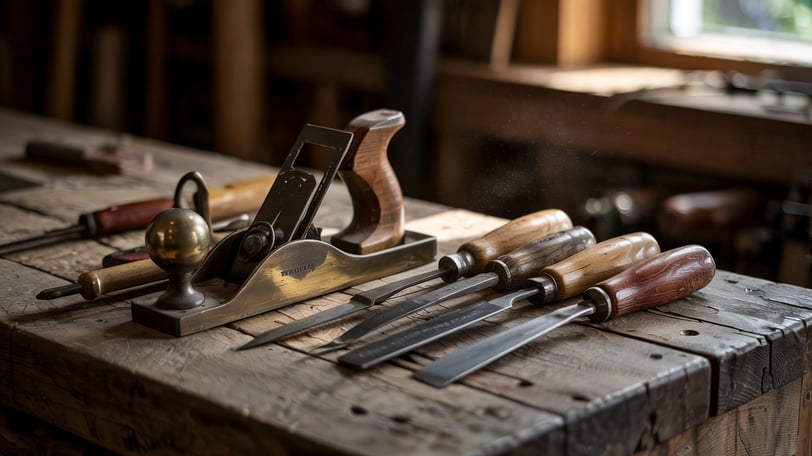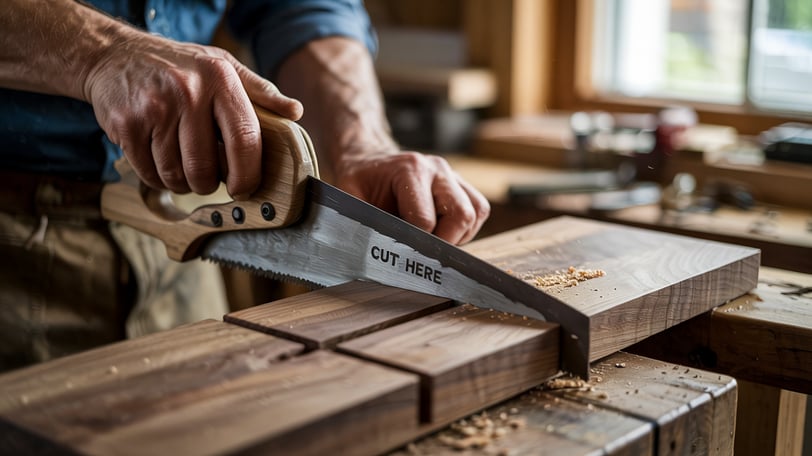Essential Woodworking Hand Tools and Techniques Every Craftsman Should Know
Discover the top woodworking hand tools and techniques every craftsman should know. Improve your skills and create quality projects with the right tools in hand.


Understanding Hand Tools in Woodworking
Before diving into specific techniques, it's essential to understand the role and function of hand tools in woodworking. Hand tools are manual devices powered by the user's physical force, allowing for precise control and fine detail work. Unlike power tools, hand tools require skill and technique to operate effectively but offer greater sensitivity and versatility in shaping wood.
Essential Hand Tools for Woodworking
Hand Planes: Hand planes are indispensable tools for smoothing, flattening, and shaping wood surfaces. They come in various sizes and types, including bench planes, block planes, and specialty planes like shoulder planes and router planes.
Chisels: Chisels are versatile tools used for cutting, shaping, and carving wood. They come in different widths and shapes, such as bench chisels, mortise chisels, and carving chisels, each designed for specific tasks.
Saws: Hand saws are used for cutting wood along the grain or across it, depending on the type of saw and the desired cut. Common hand saws include panel saws, tenon saws, dovetail saws, and coping saws.
Marking and Measuring Tools: Accurate measurement and marking are crucial in woodworking. Tools like marking gauges, combination squares, and marking knives ensure precision and consistency in woodworking projects.


Mastering Hand Tool Techniques
Planing: Proper planing is essential for achieving smooth, flat surfaces in woodworking. Start by securing the workpiece firmly and holding the plane at the correct angle. Begin with light passes and gradually increase pressure until the desired surface is achieved.
Chiseling: Chisels are versatile tools that can be used for a variety of tasks, from removing waste material to carving intricate details. Practice proper chiseling techniques, including maintaining a sharp edge, using a mallet for added force, and controlling the depth and angle of the cut.
Sawing: Achieving clean, precise cuts with a hand saw requires proper technique and control. Start by marking the cut line accurately and ensuring the saw is properly aligned. Use long, smooth strokes, and let the saw do the work without forcing it.
Sharpening: Keeping hand tools sharp is crucial for achieving clean cuts and smooth surfaces. Invest in high-quality sharpening stones or systems and learn proper sharpening techniques for different tools, including honing, grinding, and stropping.


Tips for Success
Invest in quality tools: High-quality hand tools will last longer and perform better than their cheaper counterparts.
Practice patience: Mastery of hand tools takes time and practice, so be patient and persistent in your learning journey.
Seek guidance: Take advantage of resources such as woodworking classes, online tutorials, and books to expand your knowledge and skills.
Wrapping Up
Mastering the art of hand tools in woodworking is a rewarding journey that allows for creativity, precision, and a deeper connection to the craft. By understanding the role of hand tools, learning essential techniques, and practicing patience and persistence, woodworkers can elevate their skills and create beautiful, handmade pieces that stand the test of time. Whether you're a seasoned professional or a novice enthusiast, embracing hand tools in your woodworking practice opens up a world of possibilities for creativity and craftsmanship.
